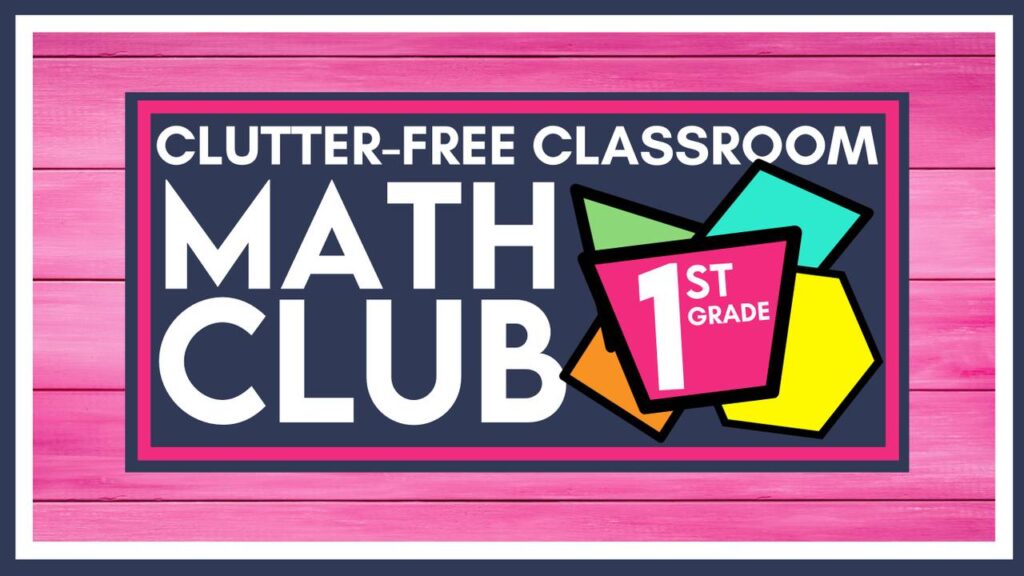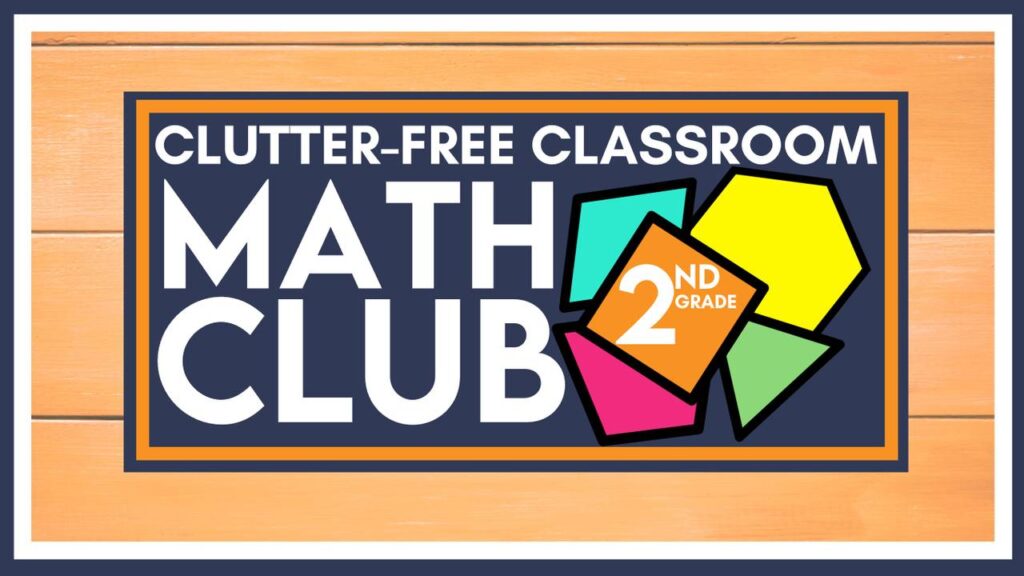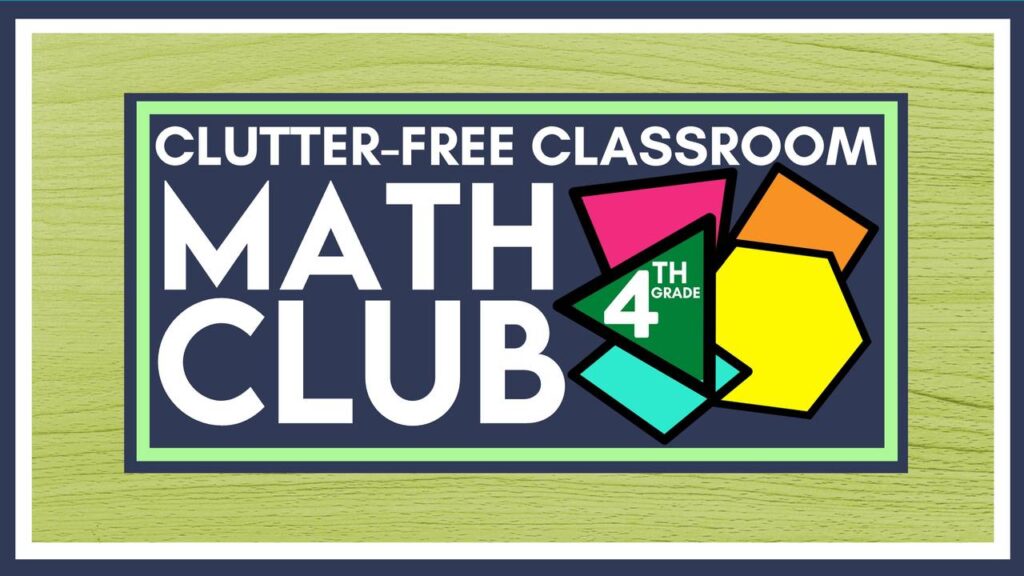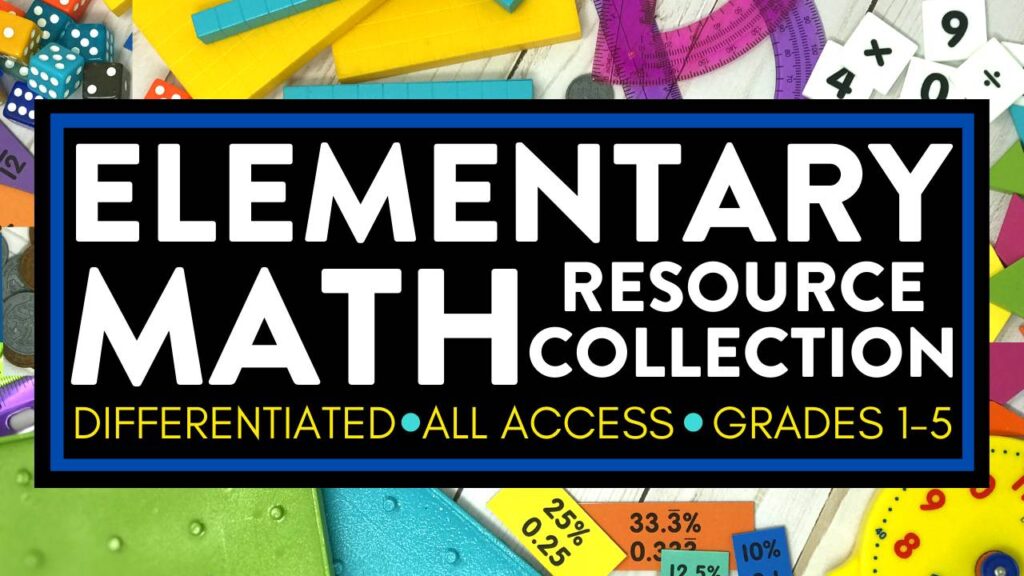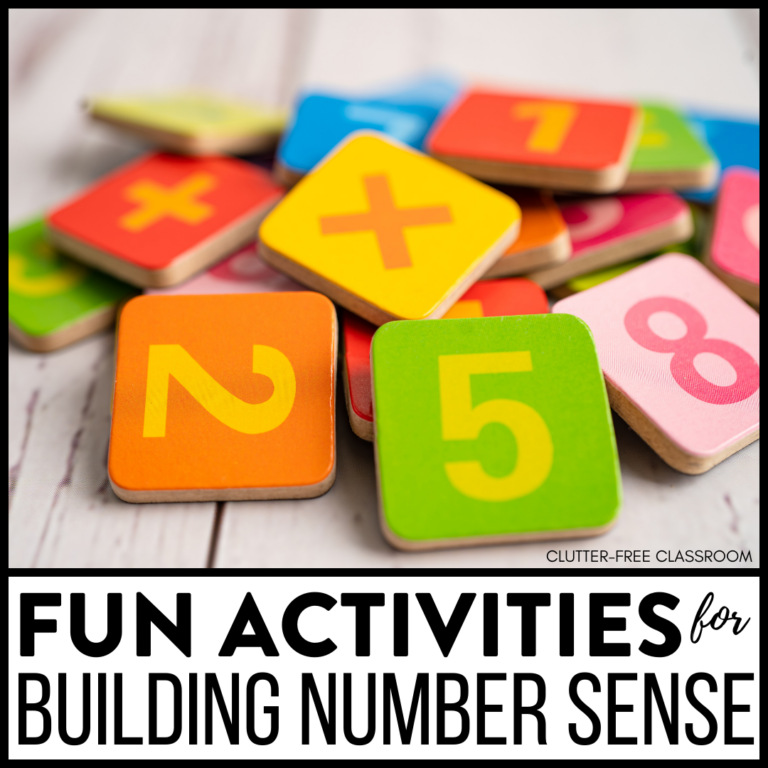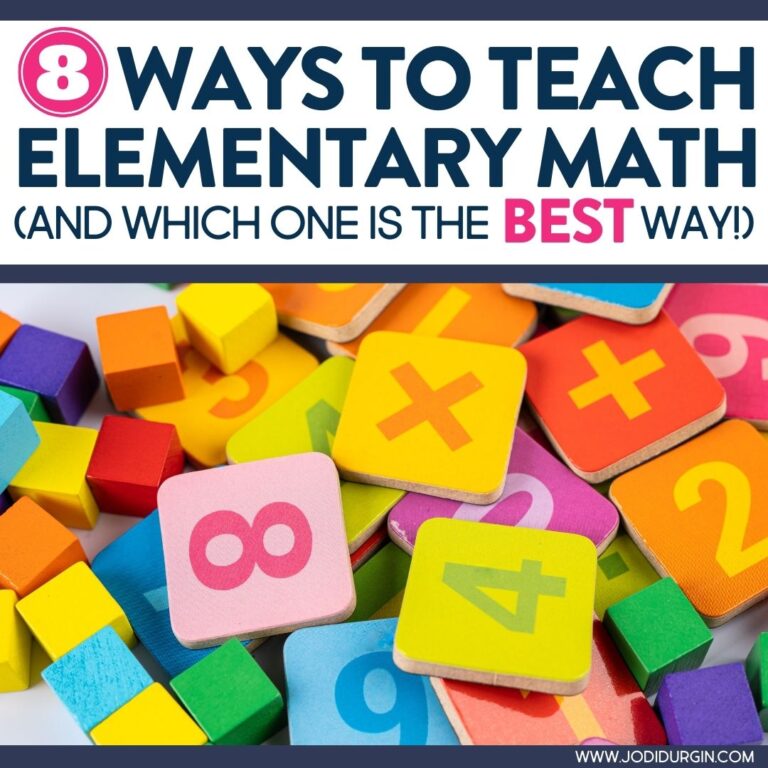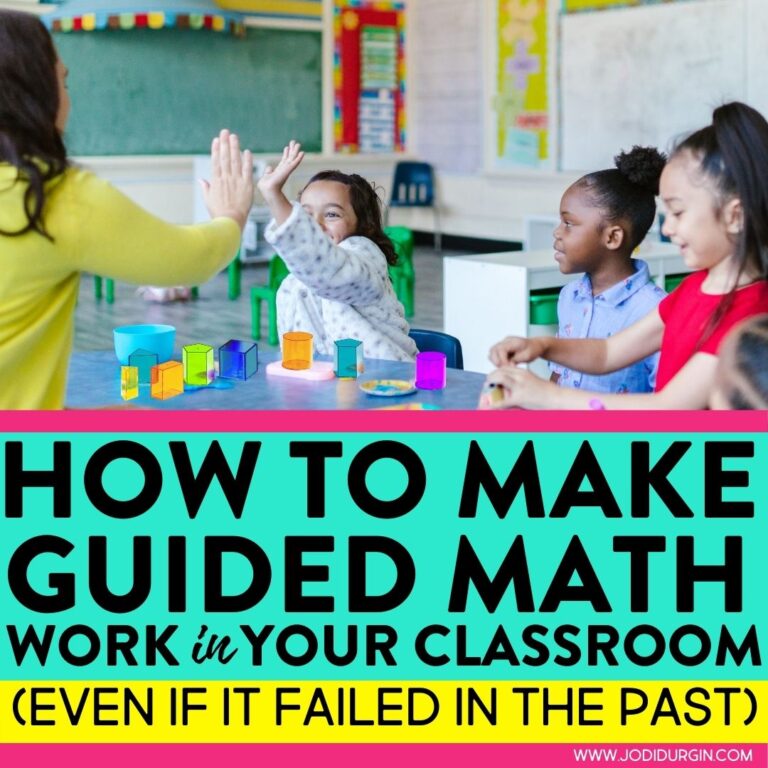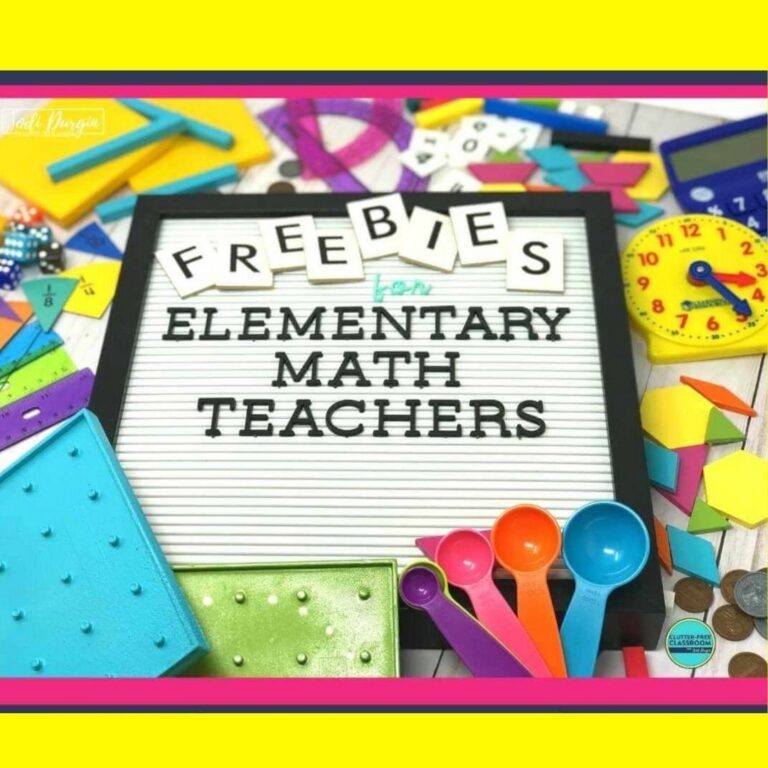Do your students struggle with explaining how they solved a problem? Do they give up on a problem soon after starting or before they even begin? Number talks are the answer! They are short, purposeful mini lessons that enhance students’ ability to comfortably and flexibly problem solve, reason, and respectfully communicate their thinking using appropriate math vocabulary and academic sentence structure (also known as math talk). They fit perfectly in a guided math workshop framework, which you can learn how to implement in my guided math workshop course (coming soon). Daily number talks promote quality classroom conversation and give your students the confidence to approach problems with a positive attitude and growth mindset, which will lead to math success this school year and beyond.

What are Number Talks?
A number talk is a short, purposeful mini-lesson that enhances students’ ability to comfortably and flexibly problem solve, reason, and respectfully communicate their thinking using appropriate math vocabulary (also called maths vocabulary in different parts of the world) and academic sentence structure. These discussions lead to students understanding that there is more than one way to solve a problem. Students benefit from having this be a part of their daily routine. Number talks should last about 10 minutes. There are four main steps: 1) A problem is presented; 2) Students engage in a productive struggle; 3) Students share with a partner; 4) Students and the teacher engage in a whole group discussion. This will become one of your favorite classroom procedures because it will give you the time for exploring and teaching math strategies and concepts!
What is the Difference Between a Number Talk and Math Talk?
Math talk is a component of a number talk. It is a way to structure how students communicate during math discussions. It encourages the use of academic sentence structure and math vocabulary words, as well as building ideas off of one another and challenging ideas in a respectful manner. You’ll be amazed at how quickly students pick up grade level math talk (including math names and math language) when they have daily practice, as well as you modeling it regularly when introducing and discussing math concepts and skills.

Why are Number Talks Important?
Number talks are an important component of elementary math instruction because of these 5 reasons:
Students…
- Develop a strong number sense
- Construct an understanding that there are many different ways to solve a problem
- Have the opportunity to talk about math concepts with support
- Build confidence in their math ability
- Learn from each other
How do I do a Number Talk?
Here are the four steps of a number talk:
1. A Problem is Presented (1 minute)
The teacher displays a problem and reads it aloud to the students. The teacher clarifies as needed. The students have access to manipulatives and tools to help them make sense of the problem and solve it.
2. Students Engage in a Productive Struggle (3-5 minutes)
Students work independently to solve the problem as the teacher circulates, asking guiding questions, and offers encouragement to persevere. They can use mental computation, journals, or whiteboards as a tool to record their thinking.
3. Students Share with a Partner (1 minute)
Students use the accountable talk stems to guide their discussion. These accountable talk stems need to be in a spot where students can access them. Again, the teacher circulates and provides support as needed.
4. Students and the Teacher Engage in a Whole Group Discussion (3-5 minutes)
The teacher asks students who would like to share their or their partner’s thinking. The students are reminded to utilize the posted accountable talk stems. This experience should feel more like a class discussion, than a question and answer between the teacher and students. When students share their thinking and give an answer, the teacher highlights the strategies and use of math talk rather than the answer.

What is an Accountable Talk Stem?
An accountable talk stem, also referred to as sentence stems or sentence starters, is a discussion prompt that structures students’ thinking so they can communicate mathematical ideas in an academic way. It supports students in being able to articulate ideas, build off of someone else’s ideas, and respectfully challenge someone else’s thinking. Utilizing accountable talk in your elementary classroom is a total game changer!
How do I Make Accountable Talk Stems Accessible to Students?
It is very important to post accountable talk stems so they are accessible to students during number talks. This will help you create a numeracy rich environment in your classroom. Here are some ideas of where you can put the accountable talk resources:
- Make them into bookmarks that students can store in their math folder and take out during number talks.
- Make them into bookmarks and store them in the area where your class meets for number talks so students can access them.
- Type them up and print a copy for each student so they can store them in their math folder.
- Type them up and project them on the board during number talks. Write them on chart paper and post them on a wall where all students can see them from where they sit during whole group instruction.

50+ Accountable Talk Stems
Here are some examples of math sentence starters that promote thoughtful classroom conversation opportunities and increase the use of math talk among students during number talks, as well as throughout the math block:
Explain
- My first step was ___.
- I decided to try ___.
- I needed to ___.
- In my head I saw ___.
- I was not sure what to do, but I noticed ___.
- The strategy I used was ___.
- I noticed ___.
- I realized ___.
- The information needed to solve this problem is ___.
- I discovered ___.
- I compared ___ to ___.
- My partner and I discussed ___.
- I can visualize this problem by ___.
- This reminds me of ___.
- I solved this problem by ___.
- The strategy I chose was ___ because ___.
- I would like to add on to what ___ said about ___.
- I solved the problem by ___.
- If ____, then ___.
- I proved my thinking by ___.
- I think ___ because ___.
- This reminds me of ___ because ___.
- I know this because ___.
- I can prove my thinking by ___.
- My model makes sense because ___.
- I know this tool will work because ___.
- My solution is accurate because ___.
- I can use ___ to solve this problem.
- I know my answer is reasonable because ___.
- The best way to solve the problem would be ___.
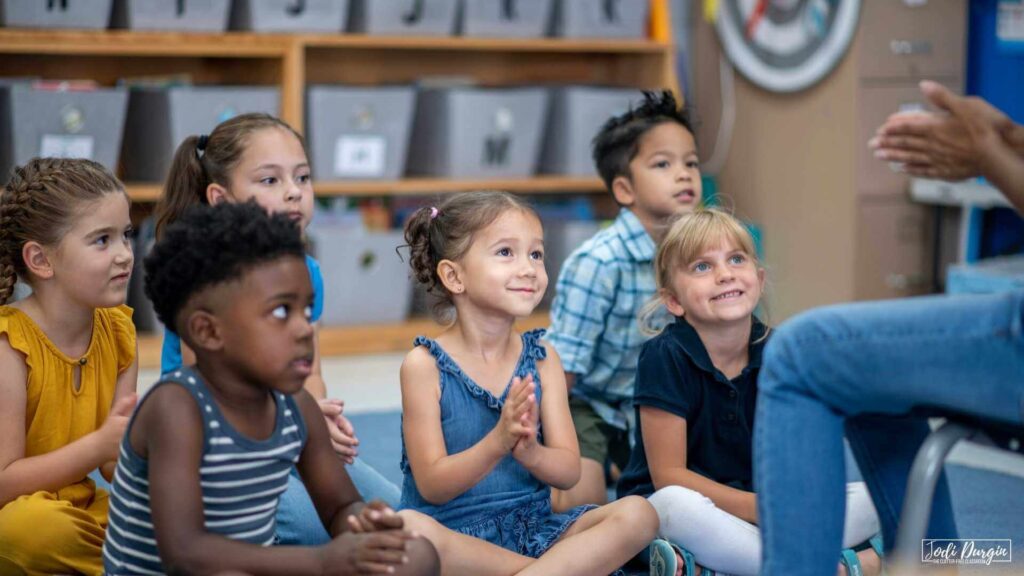
Evaluate
- I agree with ___, but I also think ___.
- I agree with ___ because ___.
- It makes sense to me because ___.
- I respectfully disagree because ___.
- I saw it a different way because ___.
- My strategy is similar because ___.
- Another point of view is ___.
- A different point of view is ___.
- Another way to look at ___ is ___.
- Another example is ___.
- A second example is ___.
- Another strategy you can use is ___.
- A more efficient way to do this is ___.
- I am confused about ___ because ___.
- My strategy is different because ___.
- What puzzles me is ___ because ___.
- When I checked my work, I noticed ___.
- Before this problem I used to think ___, but now I know ___.
- I learned from ___ that ___.
- I have a question about ___.
Extend
- Why did you ___?
- How did you ___?
- What if ___?
- I can use this in real life when ___.
- Could you have ___?
3 Number Talk Management Tips
Here are 3 number talk management tips to help you successfully and confidently implement number talks in your elementary classroom:
1. Set clear expectations
Instead of jumping right into your first number talk, take the time to set clear expectations for what students should be doing during number talks. Consider documenting expected behavior on an anchor chart and posting it in your classroom the first couple of weeks so you can refer back to it as needed.
2. Establish and maintain a consistent routine
Consistent classroom procedures and routines are essential for any classroom to run smoothly. Your number talk time is no exception! How will students get the materials they need? How will you signal their attention when it is time to share with a partner and with the whole group? About how much time do students have to complete the task? See the four steps of a number talk framework above for additional ideas.
3. Use hand signals
Introduce students to the hand signals system for managing their comments, answers, and questions. It will help you prevent your number talk lessons being taken off task by students who would like to share stories instead of answering questions or make comments instead of asking questions.
Math Resources for 1st-5th Grade Teachers
If you need printable and digital math resources for your classroom, then check out my time and money-saving math collections below!
Free Math Resources for Elementary Teachers
We hope these tips for number talks and increasing math talk will be helpful as you plan your upcoming math lessons and would love for you to try these math resources with your students. They offer students opportunities to practice grade level concepts and skills in fun and engaging ways. You can download worksheets specific to your grade level (along with lots of other math freebies) in our free printable math resources bundle using this link: free printable math activities for elementary teachers.
Check out these other math resources!
- 1st Grade Math Resources
- 2nd Grade Math Resources
- 3rd Grade Math Resources
- 4th Grade Math Resources
- 5th Grade Math Resources


